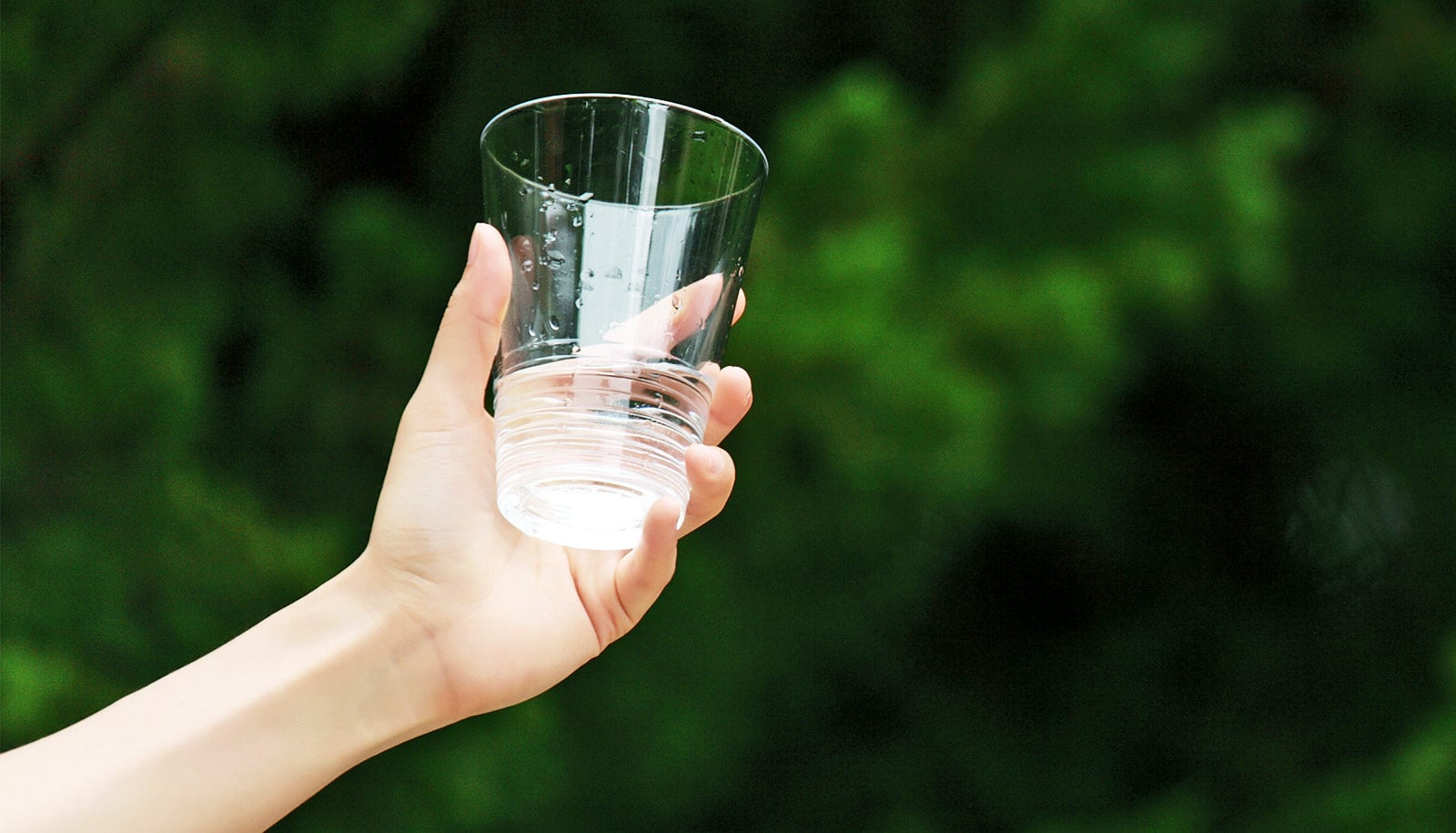Scientists have developed a method for removing more than 99 percent of bisphenol A (also known as BPA) from water quickly and cheaply.
BPA, a ubiquitous and dangerous chemical used in the manufacturing of many plastics, is found in water sources around the world.
…BPA can be found in products from DVDs and eyeglass lenses to cash register receipts—and people and wildlife are regularly exposed.
In a new paper, which appears in Green Chemistry, chemist Terrence J. Collins and his research team also compiled evidence of BPA’s presence in a multitude of products and water sources, as well as the chemical’s toxicity.
The research team builds a strong case for the need to effectively remediate BPA-contaminated water, especially industrial waste streams and landfill runoff, and they offer a simple solution.
BPA is a chemical used primarily in the production of polycarbonate plastic and epoxy resins. Its use is widespread—BPA can be found in products from DVDs and eyeglass lenses to cash register receipts—and people and wildlife are regularly exposed.
BPA is dangerous because it mimics estrogen, a naturally occurring hormone, and can affect the body’s endocrine system. Studies in fish, mammals, and human cells have shown that BPA adversely affects brain and nervous system development, growth, and metabolism, and the reproductive system.
Concerns over BPA’s health effects prompted manufacturers to start making BPA-free products like baby bottles and water bottles starting in 2010. Many BPA replacements also have similar toxicity to BPA itself.
“BPA replacements have often not been adequately tested despite the fact that testing is easy to do,” says Collins, a professor of green chemistry at Carnegie Mellon University. Collins says environmental health scientists and green chemists developed a methodology called the Tiered Protocol for Endocrine Disruption (TiPED) for identifying endocrine disruptors to the highest levels of contemporary science, which was published in Green Chemistry in 2013.
With more than 15 billion pounds of BPA being produced annually, BPA contamination and cleanup present a significant challenge.
“There is no escape from BPA—for any living creature,” Collins says. “The massive global use of BPA burdens an already overstrained water treatment infrastructure and most BPA water releases simply never reach a water treatment facility. Our approach has high potential to be a much better remediation strategy for BPA-contaminated waste streams.”
BPA-contaminated water such as industrial waste or landfill runoff may or may not be treated before being released into the environment or to wastewater treatment plants.
Collins’ team offers a simple, effective, and cheap cleanup solution. Their system involves a group of catalysts called TAML activators, small molecules that mimic oxidizing enzymes. When combined with hydrogen peroxide, TAML activators very effectively break down harmful chemicals in water.
In the paper, the researchers demonstrate the efficacy and safety of TAML activators in breaking down BPA. Adding TAMLs and hydrogen peroxide to water heavily contaminated with BPA resulted in a 99 percent reduction of BPA within 30 minutes at near neutral pH, which is the pH norm for wastewater treatment.
BPA may nudge breast cancer cells to grow
TAML treatment at this pH caused BPA to assemble into larger units called oligomers, which clump together and precipitate out of the water. According to Collins, the oligomers could be filtered and disposed of in a BPA water treatment facility.
Most importantly, extensive studies by Collins and his collaborators found the oligomers are themselves not harmful. The nature of the bonds that stick the BPA molecules together doesn’t allow the oligomers to revert to BPA.
To ensure the safety of the decontaminated water, including the oligomers, the researchers tested it with TiPED assays. They found the TAML-treated BPA water did not show estrogen activity or cause abnormalities in yeast and developing zebrafish embryos.
The researchers also tested the efficacy of TAML treatment on BPA-laden water at a pH of 11. At this higher pH, there was a greater than 99.9 percent reduction in BPA within 15 minutes. In contrast with pH 8.5 treatment, the BPA molecules were destroyed, and no oligomers were detected.
“Because TAML/hydrogen peroxide treatment eliminates BPA from water so easily at concentrations that are similar to a variety of waste streams including paper plant processing solutions and landfill leachate, assuming the lab studies transfer to the real world, we can now offer a new and simple procedure for reducing BPA exposures worldwide,” Collins says.
Additional authors of the study are from Carnegie Mellon; Oregon State University; and the University of Auckland.
Dogs have 3X more BPA after eating canned food
Carnegie Mellon, the University of Auckland, the Alexander von Humboldt Foundation, Carnegie Mellon’s Steinbrenner Institute for Environmental Education and Research, the Heinz Endowments, and the National Science Foundation supported the research and the researchers.
Source: Carnegie Mellon University



